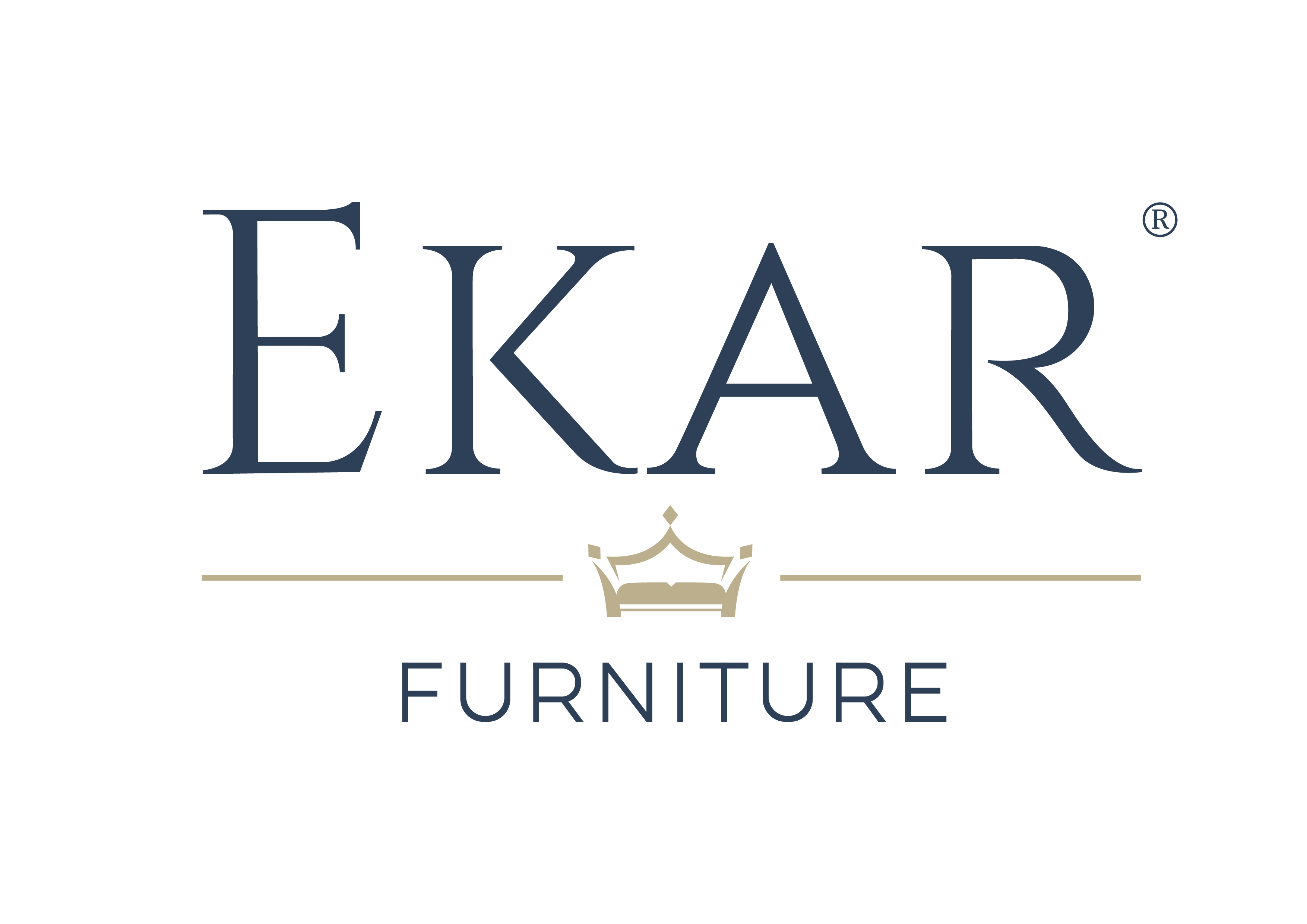
ล็อบบี้ของโรงแรมเป็นพื้นที่แรกที่ผู้เข้าพักพบเจอ และมีความสำคัญในการกำหนดบรรยากาศสำหรับการเข้าพักทั้งหมดของพวกเขา ไม่ใช่เพียงแค่พื้นที่เปลี่ยนผ่านเท่านั้น แต่ยังเป็นการแสดงตัวอย่างของบรรยากาศโดยรวมและการให้บริการของโรงแรม การศึกษาแสดงให้เห็นว่าผู้เข้าพักสร้างความประทับใจที่สำคัญภายในไม่กี่นาทีแรกของการมาถึง ซึ่งเน้นย้ำถึงความสำคัญของการออกแบบล็อบบี้ในการสร้างบรรยากาศที่น่าต้อนรับ องค์ประกอบการออกแบบ เช่น สีสัน การจัดวาง และการเลือกวัสดุ มีอิทธิพลอย่างลึกซึ้งต่ออารมณ์และความผ่อนคลาย ซึ่งส่งผลโดยตรงต่อความพึงพอใจของผู้เข้าพัก ล็อบบี้ที่ออกแบบอย่างดีไม่ได้เพียงแค่ดึงดูดสายตา แต่ยังช่วยกำหนดจังหวะสำหรับการเข้าพักที่กลมกลืนและน่าจดจำ
เฟอร์นิเจอร์มีบทบาทสำคัญในการสร้างความรู้สึกและความสะดวกสบายของผู้เข้าพักในสภาพแวดล้อมของล็อบบี้ การจัดวางที่นั่งและชิ้นส่วนเฟอร์นิเจอร์สามารถส่งเสริมการปฏิสัมพันธ์ทางสังคม ซึ่งช่วยสร้างความรู้สึกของการเป็นชุมชนระหว่างผู้เข้าพัก รายงานแสดงให้เห็นว่าระดับความสะดวกสบายของผู้เข้าพักมีความเกี่ยวข้องโดยตรงกับคุณสมบัติเฉพาะของเฟอร์นิเจอร์ เช่น ส่วนสูงของเก้าอี้และการรองรับของเบาะ ตัวอย่างเช่น เก้าอี้ที่นั่งสบายไม่เพียงแต่ช่วยเพิ่มประสบการณ์ของผู้เข้าพัก แต่ยังส่งเสริมให้อยู่ในพื้นที่ล็อบบี้ได้นานขึ้น อีกทั้งเฟอร์นิเจอร์ที่เลือกมาอย่างรอบคอบถูกออกแบบมาโดยเฉพาะเพื่อเพิ่มความสะดวกสบาย ซึ่งเป็นปัจจัยสำคัญในการทำให้ผู้เข้าพักรู้สึกผ่อนคลายและได้รับการต้อนรับ
การปรับสมดุลระหว่างความสวยงามกับฟังก์ชันในการออกแบบห้องโถงมีความท้าทายเป็นของตัวเอง เฟอร์นิเจอร์ในห้องโถงโรงแรมต้องมีความน่าสนใจทางสายตา แต่ไม่ควรเสียสละเรื่องความเหมาะสมและใช้งานได้จริง โรงแรมต้องเผชิญกับงานที่ซับซ้อนในการรักษาสมดุลนี้ โดยยืนยันให้พื้นที่เหล่านั้นมีทั้งความโดดเด่นและใช้งานได้จริง การออกแบบห้องโถงที่ประสบความสำเร็จมักแสดงให้เห็นถึงการผสมผสานอย่างไร้รอยต่อระหว่างความงามและความสะดวกสบาย โดยที่องค์ประกอบศิลปะที่กล้าหาญสามารถอยู่ร่วมกับที่นั่งที่สะดวกสบายและฟังก์ชันที่ใช้งานง่าย เมื่อทำให้สมดุลนี้สำเร็จ โรงแรมสามารถสร้างพื้นที่ทางเข้าที่น่าหลงใหลซึ่งเป็นทั้งความเพลิดเพลินทางสายตาและการพักผ่อนที่สะดวกสบายสำหรับผู้มาเยือน
ความสำคัญของที่นั่งในล็อบบี้โรงแรมไม่ควรถูกลดคุณค่า เนื่องจากต้องทนต่อการใช้งานหนักในขณะที่ยังคงรักษาความสวยงามไว้ได้ โดยการเลือกวัสดุที่ทนทาน เช่น เส้นใยสังเคราะห์และไม้ที่ผ่านการบำบัด ฉันสามารถรับประกันความคงทนและการทำความสะอาดที่สะดวก ซึ่งเป็นสิ่งสำคัญสำหรับสภาพแวดล้อมของโรงแรมที่มีผู้คนพลุกพล่าน การออกแบบที่ผสมผสานระหว่างความสะดวกสบายและความทนทานเป็นสิ่งสำคัญในการสร้างพื้นที่ที่น่าดึงดูดใจ ตัวอย่างเช่น โรงแรมชั้นนำมักจะรวมเก้าอี้นวมที่ทำจากผ้าคุณภาพสูงเพื่อเพิ่มประสบการณ์ของแขกในขณะที่ยังคงรักษาระดับสไตล์ไว้ ทางเลือกเหล่านี้สะท้อนถึงสมดุลที่จำเป็นระหว่างฟังก์ชันการทำงานและความสง่างาม ซึ่งเป็นสิ่งสำคัญสำหรับเฟอร์นิเจอร์ล็อบบี้โรงแรมที่น่าประทับใจ
โต๊ะรับแขกเป็นจุดติดต่อหลักและจุดเด่นทางดีไซน์ในล็อบบี้ของโรงแรม ดีไซน์ที่นวัตกรรมสามารถผสมผสานความใช้งานได้จริงเข้ากับความสวยงาม สร้างแนวโน้มที่ตอบสนองทั้งประสิทธิภาพในการดำเนินงานและการสื่อสารกับลูกค้า เช่น โต๊ะรับแขกที่ทำจากวัสดุอย่างไม้แท้หรือโลหะประณีตสามารถมอบทางเข้าที่โดดเด่นทางสายตาขณะเดียวกันยังคงความทนทานในพื้นที่ที่มีผู้คนพลุกพล่าน การออกแบบที่ประสบความสำเร็จมักจะรวมเอาองค์ประกอบที่ไม่เหมือนใครซึ่งช่วยให้การติดต่อสื่อสารกับแขกเป็นไปอย่างราบรื่น แสดงให้เห็นว่ารูปแบบและความใช้งานได้จริงสามารถผสานกันได้อย่างไรเพื่อสร้างคุณสมบัติสำคัญในล็อบบี้ที่เสริมประสบการณ์โดยรวมของแขก
ตัวแบ่งพื้นที่มีบทบาทสำคัญในการสร้างพื้นที่ที่แตกต่างกันแต่ยังคงความเปิดโล่งภายในล็อบบี้ของโรงแรม พวกมันช่วยรักษาความไหลลื่นในขณะที่มอบความเป็นส่วนตัวและความเป็นระเบียบ การใช้ตัวแบ่งพื้นที่สามารถช่วยกำหนดพื้นที่สำหรับรอ พักผ่อน หรือทำงานได้โดยไม่ลดทอนความเปิดกว้าง อุปกรณ์ตกแต่งที่โดดเด่น เช่น ผลงานศิลปะที่กล้าหาญหรือเฟอร์นิเจอร์ที่ไม่เหมือนใคร ยังช่วยเพิ่มความสวยงามและการใช้งานได้อีกด้วย ตัวอย่างเช่น โรงแรมมักใช้การติดตั้งศิลปะหรือชิ้นงานออกแบบเพื่อเพิ่มความน่าสนใจทางทัศนวิสัยและความโดดเด่นให้กับพื้นที่ล็อบบี้ ตัวอย่างที่ประสบความสำเร็จแสดงให้เห็นว่าการวางตำแหน่งขององค์ประกอบเหล่านี้อย่างรอบคอบสามารถเปลี่ยนล็อบบี้ให้กลายเป็นสภาพแวดล้อมที่สมบูรณ์และน่าดึงดูดใจ ซึ่งช่วยเพิ่มความพึงพอใจของผู้เข้าพักในท้ายที่สุด
โต๊ะตกแต่งและระบบแสงเป็นปัจจัยสำคัญในการเพิ่มบรรยากาศของล็อบบี้โรงแรม โต๊ะตกแต่งเพิ่มทั้งฟังก์ชันและความสวยงาม โดยทำหน้าที่เป็นพื้นที่ใช้งานสำหรับผู้เข้าพักในขณะที่เสริมความน่าสนใจทางด้านการออกแบบ นอกจากนี้ การออกแบบแสงยังมีบทบาทสำคัญในการสร้างบรรยากาศที่อบอุ่นและต้อนรับ เช่น แสงแอมเบียนต์จากแหล่งกำเนิดหลายจุด—แทนที่จะเป็นแสงเดี่ยวที่รุนแรง—สามารถสร้างพื้นที่ที่อบอุ่นและเป็นมิตร ตัวอย่างเช่น โรงแรมที่ใช้โคมระย้าหรือโคมไฟแบบดีไซเนอร์แสดงให้เห็นว่าการเลือกใช้แสงสามารถทั้งเสริมการตกแต่งและมอบความรู้สึกหรูหราได้ องค์ประกอบเหล่านี้ทำงานร่วมกันเพื่อสร้างประสบการณ์ของผู้เข้าพักโดยรวม พร้อมสร้างสภาพแวดล้อมในล็อบบี้ที่ดึงดูดสายตาและสะดวกสบาย
การเปลี่ยนแปลงของพื้นที่ล็อบบี้ของโรงแรมวันด้า เรียลม เบงผู่ เป็นโครงการที่น่าประทับใจซึ่งเน้นการผสมผสานระหว่างความหรูหราแบบโมเดิร์นกับฟังก์ชันการใช้งาน การเปลี่ยนแปลงการออกแบบสำคัญ ได้แก่ การเพิ่มเติมที่นั่งหรูหราและระบบแสงไฟเฉพาะที่ช่วยเพิ่มบรรยากาศของล็อบบี้ โครงการนี้ได้นำเสนอแนวคิดการออกแบบนวัตกรรม เช่น การรวมเอาองค์ประกอบธรรมชาติและศิลปะสมัยใหม่ ซึ่งได้รับการตอบรับที่ดีจากผู้เข้าพักและเพิ่มอัตราความพึงพอใจอย่างมาก โครงการนี้ได้รับคำชื่นชมสำหรับการเปลี่ยนแปลงพื้นที่อย่างประสบความสำเร็จ โดยแสดงให้เห็นถึงสมดุลที่สมบูรณ์แบบระหว่างความสวยงามและความสะดวกสบาย
ล็อบบี้ของโรงแรม MGM Shenzhen ได้รับการเปลี่ยนแปลงการออกแบบอย่างกว้างขวาง โดยเพิ่มฟีเจอร์นวัตกรรมใหม่และปรับปรุงประสบการณ์ของผู้เข้าพัก ด้วยการเน้นไปที่การออกแบบสมัยใหม่ที่โดดเด่นและการสร้างพื้นที่โต้ตอบ โครงการนี้ส่งผลอย่างมากต่อชื่อเสียงของโรงแรม โดยยกมาตรฐานความหรูหราขึ้นไปอีกระดับ ผู้เข้าพักชื่นชมการเปลี่ยนแปลงนี้สำหรับการผสมผสานระหว่างความสวยงามและความใช้งานได้จริง โดยคำให้คะแนนมักจะเน้นถึงสภาพแวดล้อมที่น่าสนใจและสะดวกสบายที่เกิดจากการออกแบบใหม่
การปรับโฉมล็อบบี้ของโรงแรมคราวน์พลาซ่า เชนหนงเจีย มุ่งเน้นที่การสร้างพื้นที่ต้อนรับด้วยนวัตกรรมและการเปลี่ยนแปลงที่เป็นมิตรต่อสิ่งแวดล้อม โดยการใช้วัสดุที่ยั่งยืนและผสานเข้ากับระบบแสงสว่างที่ประหยัดพลังงาน โครงการนี้สามารถลดผลกระทบต่อสิ่งแวดล้อมของโรงแรมได้อย่างมาก ความคิดเห็นหลังจากการปรับปรุงแสดงให้เห็นถึงการเพิ่มขึ้นอย่างชัดเจนในความพึงพอใจของผู้เข้าพัก สะท้อนถึงความสำเร็จของการตัดสินใจออกแบบที่คำนึงถึงสิ่งแวดล้อม และผลกระทบเชิงบวกต่อประสบการณ์โดยรวมของผู้เข้าพัก
การออกแบบที่เน้นความใกล้ชิดกับธรรมชาติ (Biophilic design) กำลังได้รับความนิยมในเฟอร์นิเจอร์ของล็อบบี้โรงแรม โดยมอบประโยชน์มากมายสำหรับสุขภาพและความรู้สึกเชื่อมโยงกับธรรมชาติของผู้เข้าพัก การนำเอาองค์ประกอบจากธรรมชาติ เช่น พืช ไม้ และหิน มาใช้ในการออกแบบเฟอร์นิเจอร์ ทำให้โรงแรมสามารถสร้างพื้นที่ที่เพิ่มทั้งความสวยงามและความสะดวกสบายได้ ตัวอย่างเช่น เก้าอี้ในล็อบบี้ที่ทำจากไม้ที่ยั่งยืน หรือโต๊ะเล็กๆ ที่ประดับด้วยพืชพรรณ สามารถเปลี่ยนพื้นที่ธรรมดาให้กลายเป็นสถานที่พักผ่อนที่อบอุ่นและเป็นมิตร งานวิจัยแสดงให้เห็นว่าผู้เข้าพักมีความพึงพอใจและความผ่อนคลายมากขึ้นในสภาพแวดล้อมที่ผสมผสานองค์ประกอบแบบ Biophilic ซึ่งยืนยันถึงผลกระทบเชิงบวกของการออกแบบนี้ นอกจากนี้การออกแบบนี้ยังไม่เพียงแต่เพิ่มความสวยงามให้กับล็อบบี้ของโรงแรมเท่านั้น แต่ยังส่งเสริมสุขภาพจิตโดยการจำลองบรรยากาศธรรมชาติ
ความต้องการเฟอร์นิเจอร์ที่ผสานเทคโนโลยีในล็อบบี้ของโรงแรมกำลังเพิ่มขึ้นอย่างรวดเร็ว เพื่อตอบสนองแขกยุคดิจิทัลในปัจจุบัน เฟอร์นิเจอร์ที่มาพร้อมสถานีชาร์จและคุณสมบัติของเทคโนโลยีอัจฉริยะได้รับความนิยมมากขึ้นเรื่อย ๆ โดยรองรับความต้องการของนักเดินทางยุคใหม่ ตัวอย่างเช่น เก้าอี้ที่มีพอร์ต USB ในตัว และโต๊ะที่มีความสามารถในการชาร์จแบบไร้สาย มอบตัวเลือกการเชื่อมต่อที่ราบรื่นสำหรับแขก ทำให้พวกเขายังคงเชื่อมต่อขณะพักผ่อน เทรนด์ใหม่ ๆ ชี้ให้เห็นถึงการพัฒนาเทคโนโลยีเพิ่มเติมในพื้นที่นี้ โดยผู้เชี่ยวชาญคาดการณ์อนาคตที่ล็อบบี้อาจมีพื้นผิวแบบโต้ตอบและควบคุมอัจฉริยะเหมือนในบ้าน การนวัตกรรมเหล่านี้เพิ่มความสะดวกสบาย ทำให้การใช้งานพื้นที่ล็อบบี้ของแขกมีประสิทธิภาพและเพลิดเพลินมากขึ้น
โรงแรมกำลังให้ความสำคัญกับความยั่งยืนในด้านการออกแบบเฟอร์นิเจอร์ โดยมักเลือกวัสดุที่เป็นมิตรต่อสิ่งแวดล้อม เช่น เหล็ก-recycled, ไม้เก่าที่ถูกนำกลับมาใช้ใหม่ และไผ่ กลายเป็นทางเลือกมาตรฐานเนื่องจากโรงแรมต้องการลดผลกระทบต่อสิ่งแวดล้อม บางสถานประกอบการกำลังปรับเปลี่ยนการคัดเลือกเฟอร์นิเจอร์เพื่อสอดคล้องกับแนวทางที่ยั่งยืน แสดงถึงความมุ่งมั่นในการรับผิดชอบต่อสิ่งแวดล้อม ตามรายงานของอุตสาหกรรม การใช้วัสดุที่ยั่งยืนสามารถลดรอยเท้าคาร์บอนของโรงแรมได้อย่างมาก เมื่อเลือกใช้เฟอร์นิเจอร์ที่เป็นมิตรต่อสิ่งแวดล้อม โรงแรมจะช่วยสนับสนุนความพยายามในการอนุรักษ์ระดับโลก ในขณะเดียวกันก็สามารถดึงดูดนักท่องเที่ยวที่ใส่ใจเรื่องสิ่งแวดล้อมซึ่งชื่นชมแนวทางการทำธุรกิจอย่างรับผิดชอบและความรับผิดชอบต่อสิ่งแวดล้อม
รูปแบบผังที่ยืดหยุ่นกำลังเป็นที่นิยมในการออกแบบห้องโถงโรงแรม เนื่องจากสามารถปรับตัวให้เข้ากับความต้องการหลากหลายของผู้เข้าพักได้ การออกแบบเฟอร์นิเจอร์โมดูลาร์ที่นวัตกรรมช่วยให้โรงแรมสามารถจัดเรียงพื้นที่ใหม่ได้อย่างง่ายดายสำหรับกิจกรรมและวัตถุประสงค์ต่างๆ เพิ่มประสบการณ์ของผู้เข้าพัก ตัวอย่างเช่น การจัดเรียงที่นั่งแบบโมดูลาร์สามารถปรับเปลี่ยนได้อย่างรวดเร็วเพื่อแปลงห้องโถงให้กลายเป็นสถานที่สำหรับการประชุมหรือการรวมตัวทางสังคม มอบความหลากหลายที่น่าทึ่ง โรงแรม เช่น Hilton ได้ยอมรับแนวคิดผังที่ยืดหยุ่น ทำให้พื้นที่สามารถเปลี่ยนจากโซนพักผ่อนเงียบสงบไปสู่ศูนย์กลางสังคมที่คึกคักได้อย่างราบรื่น สร้างความประทับใจให้กับผู้เข้าพักด้วยบริการหลายฟังก์ชันที่ตอบสนองความต้องการและความชอบเฉพาะของพวกเขา ความสามารถในการปรับตัวนี้ไม่เพียงแต่เพิ่มความพึงพอใจของผู้เข้าพักเท่านั้น แต่ยังช่วยปรับปรุงประสิทธิภาพในการดำเนินงาน